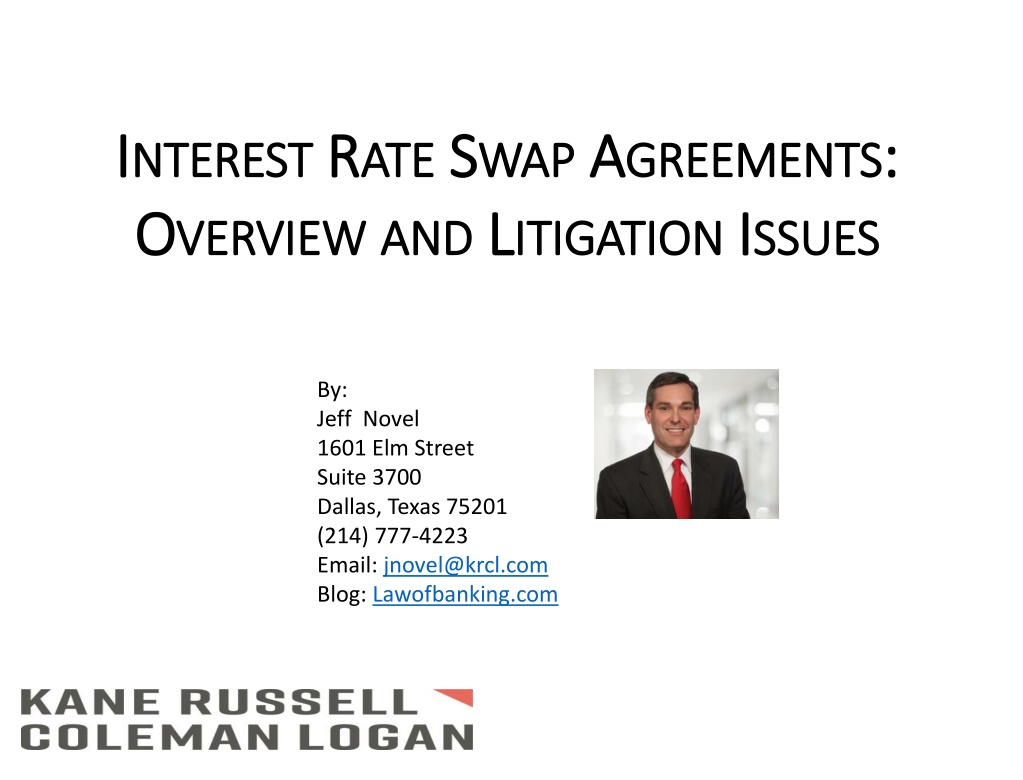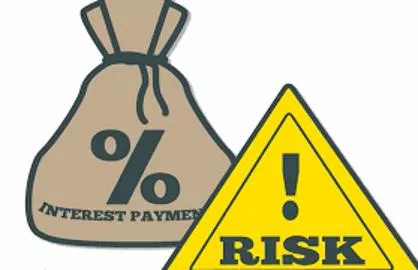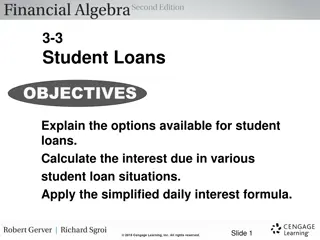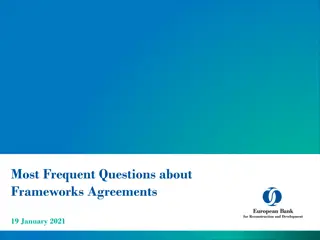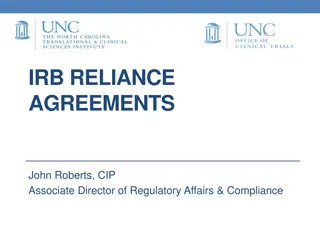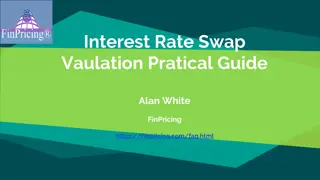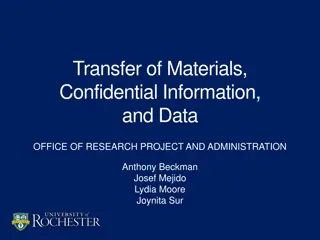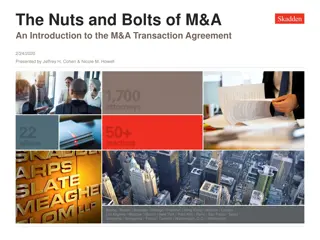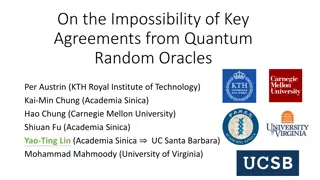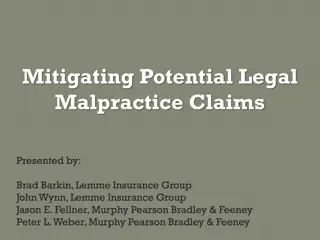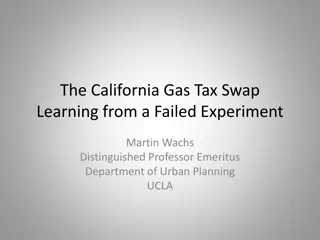Interest Rate Swap Agreements
An interest rate swap agreement is a contract between two parties to exchange cash flows at specified intervals, allowing for risk management and altering the characteristics of assets and liabilities. By making fixed and floating rate payments, parties can hedge against interest rate fluctuations and customize their financing options. Key components include the ISDA Master Agreement and its versions, outlining provisions for swap transactions.
Uploaded on Sep 28, 2024 | 2 Views
Download Presentation

Please find below an Image/Link to download the presentation.
The content on the website is provided AS IS for your information and personal use only. It may not be sold, licensed, or shared on other websites without obtaining consent from the author.If you encounter any issues during the download, it is possible that the publisher has removed the file from their server.
You are allowed to download the files provided on this website for personal or commercial use, subject to the condition that they are used lawfully. All files are the property of their respective owners.
The content on the website is provided AS IS for your information and personal use only. It may not be sold, licensed, or shared on other websites without obtaining consent from the author.
E N D
Presentation Transcript
I INTEREST NTEREST R RATE O OVERVIEW VERVIEW AND ATE S SWAP AND L LITIGATION ITIGATION I ISSUES WAP A AGREEMENTS GREEMENTS: : SSUES By: Jeff Novel 1601 Elm Street Suite 3700 Dallas, Texas 75201 (214) 777-4223 Email: jnovel@krcl.com Blog: Lawofbanking.com
OVERVIEWOF INTEREST RATE SWAP AGREEMENT What is it? A contract between two parties to exchange cash flows at specified intervals, calculated by reference to an index. What is the purpose? It provides a tool for altering the character of assets and liabilities, fine tuning risk exposure, lowering the cost of financing or speculating on interest rate fluctuations. A typical use is to give a variable-rate loan the characteristics of a fixed-rate loan.
OVERVIEWOF INTEREST RATE SWAP AGREEMENT How does it work? One party makes fixed rate payments on an agreed hypothetical principal amount ( notionalamount ), during a given period and the other counterparty makes floating rate payments. The payments are netted at specified intervals to determine who is in the money.
OVERVIEWOF INTEREST RATE SWAP AGREEMENT LIBOR Counterparty A Counterparty B 10% Fixed Rate $1 Million Notional Amount and semi annual payments Assumption: LIBOR at 9% at pay period Assumption: Libor at 11% at pay period Counterparty B must pay Counterparty A: (10%-9%) * $1,000,000 * (0.5) = $5,000 Counterparty A must pay Counterparty B: (11%-10%) * $1,000,000 * (0.5) = $5,000
OVERVIEWOF INTEREST RATE SWAP AGREEMENT Three key components: 1. International Swap Dealers Association, Inc. (ISDA ) Master Agreement Schedule to the ISDA Master Agreement Confirmation(s) 2. 3.
ISDA MASTER AGREEMENT Two Versions: Published in 1992 and 2002. Includes provisions generally applicable to all swap transactions. A few differences in the 1992 and 2002 versions: Grace period for payment defaults shortened from three business days to one business day. New methodology for close-out calculations. Introduction of a force majeure provision as a termination event. Introduction of a set-off provision. Expansion of breach of agreement Event of Default to include repudiation.
ISDA MASTER AGREEMENT Key Provisions Preamble Party A and Party B have entered and/or anticipate entering into one or more transactions (each a Transaction ) that are or will be governed by this Master Agreement Transaction is not a defined term The intention is that the Master Agreement should be capable of use (with modifications if necessary) for whatever derivative transactions the parties choose. Where the Master Agreement is intended to apply, this should be specified in the relevant Confirmation unless the parties have agreed to another methodology to identify transactions under the Master Agreement.
ISDA MASTER AGREEMENT Key Provisions Events of Default and Termination Events (Section 5) Slightly different consequences follow from an Event of Default and a Termination Event, though the ultimate effect early termination and close-out of all affected Transactions is the same. An Event of Default is one for which a party can be regarded to be culpable. A Termination Event may simply be suffered by, or happen to, a party.
ISDA MASTER AGREEMENT Key Provisions Events of Default (Section 5(a) Failure to Pay or Deliver A breach of a payment or delivery obligation which is not remedied in a three day grace period (1 day grace period in 2002 ISDA Master Agreement). Breach of Agreement A breach of any other obligations in the Master Agreement which are not remedied within a 30 day grace period. Credit Support Default Breach of a Credit Support Document or the Credit Support Document ceases to be in full force. Misrepresentation Any representation, other than one of the tax representations, is incorrect when made or repeated.
ISDA MASTER AGREEMENT Key Provisions Events of Default (Section 5(a) Default under Specified Transaction A default under other derivative transactions executed by the parties. Cross Default Generally relates to a default by a party with respect to any obligation related to borrowed money (can be modified to cover other obligations). Bankruptcy Generally relates to insolvency proceedings. Merger Without Assumption Merger where the surviving party fails to assume obligations under the Master Agreement or related documents.
ISDA MASTER AGREEMENT Key Provisions Termination Events (Section 5(b)) Determine which party is the Affected Party. Illegality A party cannot legally perform its payment or delivery or other material obligations under the Transactions or Credit Support Documents. Tax Events Relates to any action or proceeding brought by a tax authority, or a Change in Tax Law which requires that payments from one party to the other be grossed-up. Tax Event on Merger Relates to a merger or similar reorganization which would require one party to gross up payments to the other. Credit Event Upon Merger Surviving or transferee entity is materially less creditworthy than the Affected Party immediately before the action.
ISDA MASTER AGREEMENT Key Provisions Early Termination (Section 6) Following Event of Default Automatic Early Termination occurs day before Termination Event; or Non-defaulting Party has the right to terminate by designating an Early Termination Date within 20 days of notice. Following a Termination Event Depends on whether one or both parties are an AffectedParty One Affected Party (Illegality, Tax Event, or Tax Event Upon Merger) = 20 days to resolve for Affected Party / 30 days to attempt to resolve for other party (Does not apply for Illegality in 2002 ISDA). Two Affected Parties = 30 days to resolve. If solutions fail, or for any other event, an Early Termination Date may be designated by not more than 20 days notice.
ISDA MASTER AGREEMENT Key Provisions Early Termination (Section 6) Following designation for Event of Default or Termination Date: The agreement will terminate on the designated date, whether or not the relevant Event of Default or Termination Event is still continuing; and The obligation to make further payments or deliveries with respect to the TerminatedTransactions will end and be replaced by an obligation to pay the close-out amount. As soon as practicable following the occurrence of an Early Termination Date, the close out amount must be calculated under the close-out netting provisions on Section 6(e).
ISDA MASTER AGREEMENT Key Provisions Payments on Early Termination The net amount of the value of future obligations under the 1992 Agreement is determined by either MarketQuotation or Loss. This is selected in the Schedule. Market Quotation involves gathering quotes for replacing the transactions from leading dealers in the relevant market. Loss involves calculating the amount which the calculating party has lost or gained as a result of the termination. The payment depends on the payment method chosen: First Method If the close-out calculations show that the net balance is in favor of the defaulting party, no payment is required by the non- defaulting party. This is rarely used and there is doubt in some jurisdictions whether it is effective. Second Method Provides for full two-way payments on default, i.e., a non-defaulting party is required to make a payment .
ISDA MASTER AGREEMENT Key Provisions 2002 ISDA Master Agreement MarketQuotation and Loss are replaced with Close-Out Amount. Determined in good faith to produce commercially reasonable result. It is the amount of the losses incurred in replacing or providing the economic equivalent to the Terminated Transaction. The Determining Party will consider: Quotations from third parties Relevant market data supplied by third-parties Internal information of the same type used in the regular course of business. May consider any loss or costs incurred as a result of terminating, liquidating or re-establishing any hedges.
SCHEDULETO ISDA MASTER AGREEMENT Customizes the parties contractual arrangement by reflecting any deviations from the standard language of the ISDA Master Agreement and specific terms negotiated by the parties. Items typically addressed in the Schedule include: The calculation of payments on early termination; Events that constitute additional events of default or termination events; Cross-collateralization; Representations and agreements to deliver documents; Non-reliance and independence of obligations; and Risk disclosures.
CONFIRMATIONS The Master Agreement and Schedule provide a framework for the transaction. They do not provide the financial / pricing terms of individual deals. The confirmation provides these details: Trade date and effective date. Termination date Notional amount Fixed and floating rate payers and rates Reaffirms non-reliance, that the parties are capable of assuming the risks of the transaction and that the parties do not have a fiduciary relationship.
LITIGATION ISSUE # 1 Prepayment penalties and the closeout fee Issue The note or loan agreement states that there is no prepayment penalty and the borrower claims the closeout fee is a prepayment penalty. Case law Thrifty Oil Co. v. Bank of Am. Nat l Trust and Sav. Ass n, 322 F.3d 1039, 1042 (9th Cir. 2003) (loan and swap agreement create separate obligations) BKB Properties, LLC v. Suntrust Bank, 453 Fed. Appx. 582, Nos. 09- 6260, 10-5065 (6th Cir. July 12, 2011) (a prepayment penalty and termination fee are separate obligations). American Infoage, LLC v. Regions Bank, No. 8:13-cv-1533-T-23TGW, 2014 WL 4794748 (Sep. 25, 2014) (elimination of prepayment penalty in loan agreement did not eliminate obligation to pay termination fee under the swap agreement). Solution Double-check the language in the note and loan agreement.
LITIGATION ISSUE # 2 The Closeout Fee Issue The borrower did not know of the existence or understand the extent of the Closeout Fee. Schedules typically include language stating: It is important to realize, that should you liquidate the swap contract prior to maturity, you may realize a significant financial gain or a loss. The borrower cannot understand how high a Closeout Fee may be based on the Swap Agreement. Solution Provide hypothetical gains or losses that might be realized under various interest rate scenarios and liquidation strategies.
LITIGATION ISSUE #3 Calculation of the Closeout Fee Issue The borrower is uncertain how the Closeout Fee was calculated. Section 6(c)(ii) of the ISDA Master Agreement provides that upon an early termination, no further payments are due under the Swap Agreement apart from those calculated under Section 6(e). Section 6(e) substitutes prior payment obligations with the requirement to pay a new net amount which takes into account the following elements: (i) the value of future obligations owed by each party to the other under outstanding Transactions; and (ii) the value of unpaid amounts which have already accrued and are owed between the parties. Solution Provide clear calculations and choose the Second Method.
LITIGATION ISSUE #4 Violation of the Bank Holding Company Act Issue: Was the Swap Agreement coupled with a loan in a manner that violated the Bank Holding Company Act? The Bank Holding Company Act (12 U.S.C. 1972) is directed at tying arrangements by banks that require bank customers to accept or provide some other service or product or to refrain from dealing with other parties in order to obtain the bank product or service they desire. There is a potential violation where (1) the banking practice in question was unusual in the banking industry; (2) an anti- competitive tying arrangement existed, and (3) the practice benefits the bank. Solution Review policies to confirm how Swap Agreements are being offered to customers.
